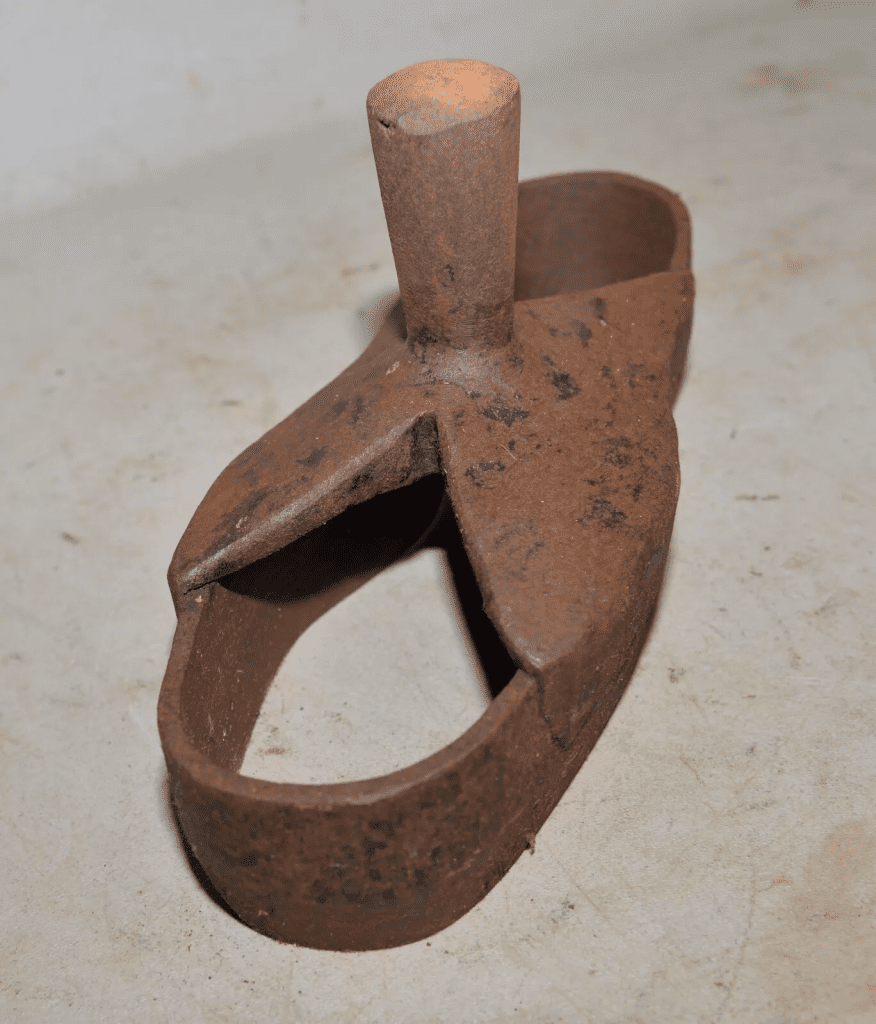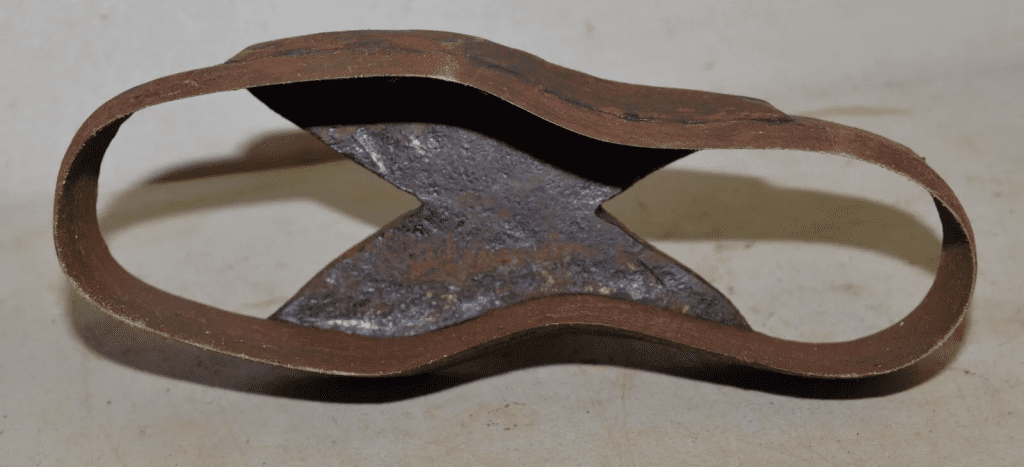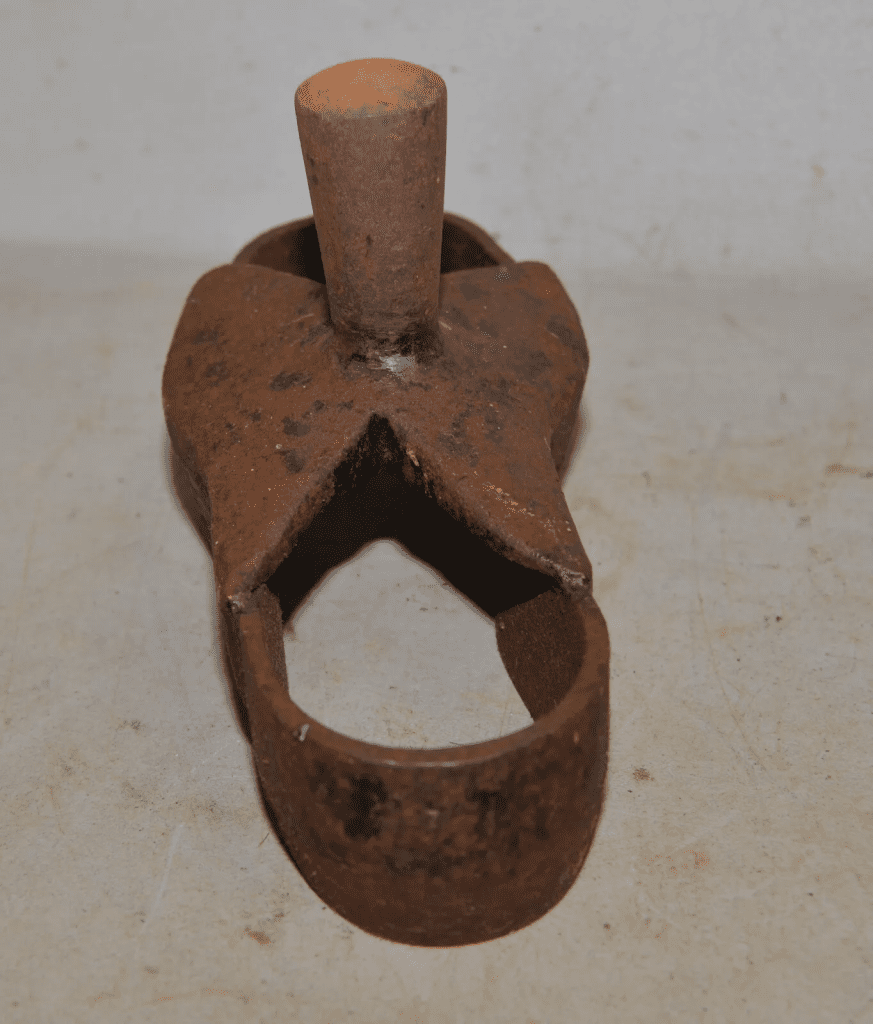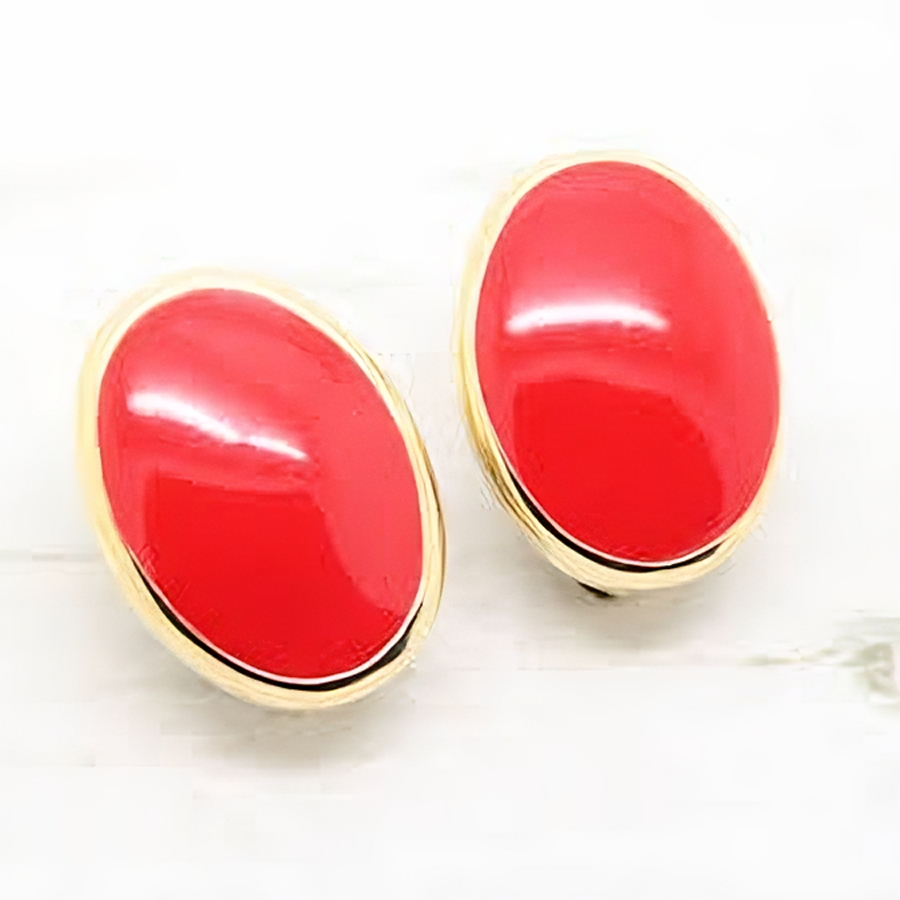The vintage steel shoe sole die cutter stands as a significant artifact in the history of shoemaking, marking an evolution in the industry. Originating in the early 19th century, this tool was pivotal in shoemaking workshops, enabling cobblers to cut leather precisely into shoe soles. At a time when handmade shoes were standard, the die cutter not only streamlined production but also set the stage for future industrial advancements. Let’s delve into the history, usage, and enduring legacy of this invaluable tool in craftsmanship.
The Origins of the Steel Shoe Sole Die Cutter

The steel shoe sole die cutter emerged during an era when shoemaking was entirely manual. Early 19th-century cobblers relied on their skills and basic tools to create durable, custom-made shoes. As demand for shoes grew, manual methods became unsustainable, necessitating tools that could enhance efficiency without compromising quality.
The steel shoe sole die cutter was the answer. It enabled cobblers to cut uniform, perfectly shaped soles from leather quickly and precisely. Before its invention, cutting shoe soles was a labor-intensive process requiring meticulous effort to get each piece right. The die cutter revolutionized this process, allowing cobblers to meet growing demand and increase production capacity in small workshops.
Usage in Leatherworking: Precision and Efficiency
Designed to simplify the process of cutting leather into shoe soles, the steel shoe sole die cutter made the task easier, faster, and more accurate. It comprised a heavy steel frame housing a die, or a sharp metal mold, shaped like a shoe sole. Cobblers would place a sheet of leather underneath the die and apply pressure, either by hand or through a press, to cut the leather into the desired shape. The outcome was a perfectly cut sole, ready to attach to the shoe’s upper part.
This method ensured uniform shape and size for each sole, saving time and reducing waste. Cobblers could maximize leather usage, cutting several soles from a single sheet with minimal scraps. For craftsmen who valued efficiency and precision, the steel shoe sole die cutter was revolutionary.
Beyond leather, the die cutter was also effective with other durable materials like rubber or synthetic fabrics, making it versatile for various shoe types. Whether crafting boots, dress shoes, or work footwear, cobblers could rely on the die cutter for consistent results.
Impact During the Industrial Revolution
The advent of the steel shoe sole die cutter coincided with the Industrial Revolution, a period of rapid advancements in manufacturing and production methodologies. As various industries mechanized, so did trades like shoemaking.
Initially used in small cobbler workshops, the die cutter’s efficiency and ability to produce uniform results made it essential as shoemaking scaled up. Factories adopted the die cutter in their production lines, blending handmade and machine-assisted methods.
The Industrial Revolution introduced steam-powered machinery and conveyor belt systems, allowing manufacturers to produce shoes rapidly. The die cutter, though no longer solely hand-operated, maintained its core function of cutting soles quickly and efficiently, contributing significantly to shoemaking modernization.

The Design of the Vintage Die Cutter: A Blend of Strength and Simplicity
One notable aspect of the vintage steel shoe sole die cutter is its design. Crafted from high-quality steel, it offered stability and durability, with a sharp metal die for clean, precise cuts.
While designs evolved for larger-scale production, the basic concept remained the same. Its simplicity and functionality made it indispensable in any shoemaking workshop. The compact design allowed integration into small spaces, maintaining efficiency without large machinery.
Today, collectors and enthusiasts admire these die cutters for their craftsmanship. Many remain in excellent condition, reflecting their robust construction.
Legacy in Modern Shoemaking and Collecting

Modern large-scale shoe production depends on advanced machinery and automation, but the vintage steel shoe sole die cutter’s legacy endures. Its influence is evident in modern shoemaking, especially in smaller, bespoke workshops where traditional craftsmanship is cherished. The die cutter symbolizes the finest shoemaking—a blend of skill, precision, and dedication to quality.
Besides practical use, the die cutter is now a prized collectible. Vintage tool and leatherworking enthusiasts value these devices for their historical significance and craftsmanship. Owning a vintage steel shoe sole die cutter is like holding a piece of history, a tangible reminder of the craftsmanship that shaped shoemaking.
For modern leatherworkers and hobbyists, the die cutter remains a functional tool, often employed in handmade shoe projects where quality and precision are paramount. Whether for practical use or as a collector’s item, the vintage steel shoe sole die cutter continues to be revered for its role in shoemaking evolution.
The Evolution of Shoemaking: From Handcrafted to Mechanized

The vintage steel shoe sole die cutter symbolizes the broader evolution of shoemaking—from handcrafted, labor-intensive methods to efficient, mechanized processes. Though the tool is a relic, its impact is undeniable.
Today, as fast fashion and mass-produced shoes dominate, there’s renewed appreciation for traditional cobbling. Many shoe enthusiasts prefer bespoke, handmade footwear, valuing the craftsmanship and detail missing in mass production. The vintage die cutter reminds us of the time when each shoe was a unique, carefully crafted product—a stark contrast to today’s factory-made shoes.
Conclusion: A Timeless Tool with Enduring Value
The vintage steel shoe sole die cutter was more than just a tool; it was essential to the cobbler’s craft, shaping the modern shoemaking industry. Its precision, simplicity, and efficiency made it indispensable in both small workshops and large-scale productions. Today, it holds value for collectors, hobbyists, and leatherworking enthusiasts, representing a significant chapter in craftsmanship history.
As we reflect on the evolution of shoemaking, the die cutter stands out as a symbol of ingenuity and progress—a tool that bridged traditional craftsmanship and industrialization. Its legacy lives on, not only in the shoes it helped create but in the skilled tradespeople who used it.


